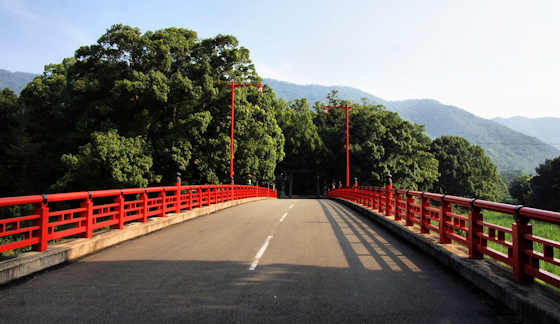The third dance at Kanzui's annual all-night matsuri was the first theatrical piece of the evening, Yumi Hachiman. The dance is very common and most matsuris will perform it. the first part of the dance sees Hachiman introduce himself and strut his stuff....
Hachiman, also read as Yahata, was originally a kami from northern Kyushu but grew in influence and became associated with the legendary Emperor Ojin. Eventually adopted as the tutelary deity of samurai he is known as the god of war. Hachiman shrines are now very common, and by one method of calulating are the most common shrines in Japan.
The second part of the dance sees the demon make his entrance, strut his stuff, and then hachiman and he begin their combat.
The second part of the dance sees the demon make his entrance, strut his stuff, and then hachiman and he begin their combat.
There are two versions of the demons identity, the first simply has him as a demon from a foreign country plaguing the local villagers in north Kyushu. The second has him as a demon from the lower levels of Buddhist hell. As much of the buddhist content was purged from Iwami Kagura in the late 19th century, It would suggest that tghis version is older.
Not surprisingly, the demon is defeated by Hachiman using a bow and arrows, weapons especially associated with Ojin.
The young junior-highschool boy dancing hachiman did a good job. In larger kagura groups hachiman has an aide.






































